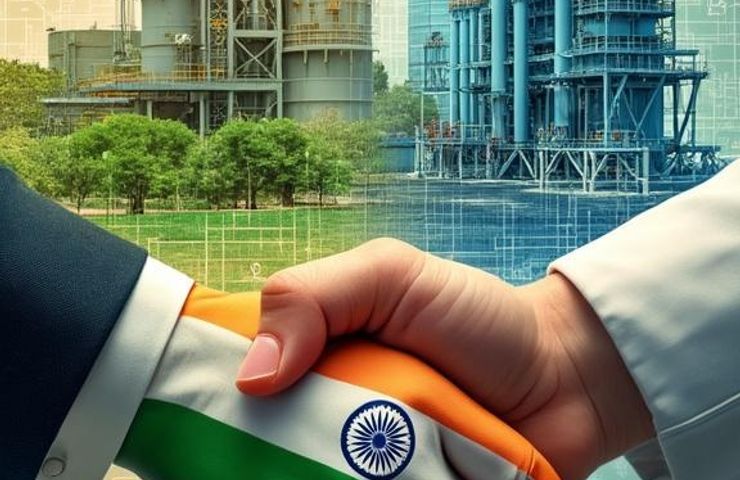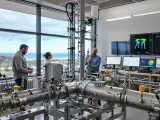
Green Hydrogen Research and Semiconductor Manufacturing Highlight Uttar Pradesh–Japan Partnership
August 11, 2025Over July and August 2025, the Uttar Pradesh Government took a delegation of top officials and industry experts on a trip to Japan, meeting with academic heavyweights and corporate leaders across Tokyo, Osaka and Yamanashi. Here’s the lowdown on what went down:
- They kicked off a Japan Desk at Invest UP to fast-track Japanese investments into Uttar Pradesh.
- A new MoU is in place to set up a green hydrogen centre of excellence, joining forces with IIT Kanpur, IIT-BHU and the University of Yamanashi’s Clean Energy Research Centre.
- They’ve sat down with Tokyo Electron Ltd to scope out a semiconductor R&D and assembly hub.
- An MoU with DENSO Corporation lays the groundwork for an EV motor generator plant in Gautam Buddha Nagar.
- Plans are rolling with Jent Company Ltd on a recyclable plastics project in Gorakhpur, aiming to go live by 2026.
- Conversations are underway with Mitsui & Co., Tanaka Electric and KPIA on investments in logistics, rare earth elements and pharma clusters.
Technical Focus: Green Hydrogen Electrolysis
At the heart of the new centre is a push to pilot Power-to-Gas (P2G) plants that use both alkaline and proton exchange membrane (PEM) electrolyzers at multi-megawatt scale. They’re zeroing in on:
- Electrode materials and catalysts tweaks to push electrolyzer efficiency beyond 70%.
- Advanced power electronics to smooth out the ups and downs of solar and wind energy feeds.
- Digital twins for live monitoring and predictive maintenance, so downtime becomes a thing of the past.
The University of Yamanashi brings its hands-on experience from domestic installations, while IIT Kanpur and IIT-BHU focus on tailoring the tech to local grid quirks, water pre-treatment steps and storage options like compressed gas or metal hydrides.
Strategic Angle: Semiconductor Manufacturing
With Tokyo Electron in the picture, UP is eyeing an OSAT (assembly, packaging and testing) hub built to ISO Class 5 cleanroom specs. They’re aiming to:
- Localize the final assembly of power semiconductors and MEMS sensors.
- Set up a joint R&D cell to fine-tune process flows and boost yields.
- Partner with tech institutes on workforce upskilling, making sure talent keeps pace with semiconductor manufacturing demands.
Sweeteners like fiscal incentives, land allotments and fast-track approvals are on the table to draw long-term investors and spark tech transfer.
Business and Policy Context
Riding on Japan’s Basic Hydrogen Strategy, UP has carved out incentives including up to 30% capital subsidies for electrolyzer and fab gear, priority environmental clearances and reserved land parcels through the UP State Industrial Development Authority. Sumitomo Mitsui Banking Corporation has been a big backer, helping set up the Japan Desk to cut through red tape and keep the conversation moving. Meanwhile, Mitsui & Co. and Tanaka Electric are mapping logistics corridors for rare earth magnets and high-precision parts, and KPIA’s interest hints at emerging bio-innovation clusters. UP is also exploring local content rules for electrolyzer and chip components to bolster domestic supply chains.
Regional Potential and Infrastructure
It’s not just talk—UP’s got the infrastructure to match. The Delhi–Mumbai and Amritsar–Kolkata industrial corridors slice right through the state, delivering rock-solid road and rail links. Solar parks in Bundelkhand and wind farms out west feed a steady power stream, letting electrolyzers hum along 24/7. Ongoing water grid upgrades and wastewater recycling tackle feedstock needs head-on, priming the region for green hydrogen and chip fabs. On the digital side, expanding broadband in industrial zones sets the stage for remote monitoring and data-driven ops.
Parallel Benchmark: Japan’s Hakushu Plant
Take Suntory’s Hakushu distillery: it runs a 16 MW PEM electrolyzer synced with hydro and solar assets, hitting stable hydrogen yields for industrial use. Lessons on grid integration, water purification and biorefinery synergy are being eyed by the UP-Japan team—they’ll tweak what worked at Hakushu to fit local water treatment specs and regional demand curves.
Expert Perspective
“Aligning Japan’s electrolyzer know-how with India’s manufacturing scale is pure gold,” says Dr. Anurag Gupta, energy policy analyst at the Center for Sustainable Development. “The real test will be locking down local catalyst supply chains and keeping the grid stable under variable loads. If UP nails the pilots, it could become the poster child for state-level hydrogen ecosystems across India.” He also stresses that academia-industry link-ups are key for getting a future-ready workforce in place.
Policy Implications
This UP-Japan collaboration dovetails neatly with India’s national green hydrogen mission, which targets 5 million tonnes of domestic output by 2030. UP’s initiatives could serve as a blueprint for other states, nudging policymakers to rethink import duties on electrolyzer parts, fine-tune hydrogen quality benchmarks and roll out a Technical Certification Program (TCP) for critical gear.
Implications and Next Steps
Nailing these deals is expected to unlock:
- Major FDI—we’re talking billions of dollars heading into the state.
- Job creation across R&D, manufacturing and support services—tens of thousands of new roles.
- CO₂ cuts by swapping out grey hydrogen and diesel-based processes in local industries.
To keep things on track and dodge execution snags—like land acquisition hiccups or talent gaps—the Japan Desk will host quarterly reviews, convene a multi-stakeholder forum and stand up task forces for grid upgrades and skill development.
Closing Insight
By weaving together green hydrogen electrolysis, semiconductor manufacturing and other clean energy tech, Uttar Pradesh is making a clear play for sustainable industrial leadership. If these partnerships hit their stride, UP won’t just redefine its own growth story—it could reshape India’s place in the global hydrogen production and semiconductor ecosystem.



 With over 15 years of reporting hydrogen news, we are your premier source for the latest updates and insights in hydrogen and renewable energy.
With over 15 years of reporting hydrogen news, we are your premier source for the latest updates and insights in hydrogen and renewable energy.